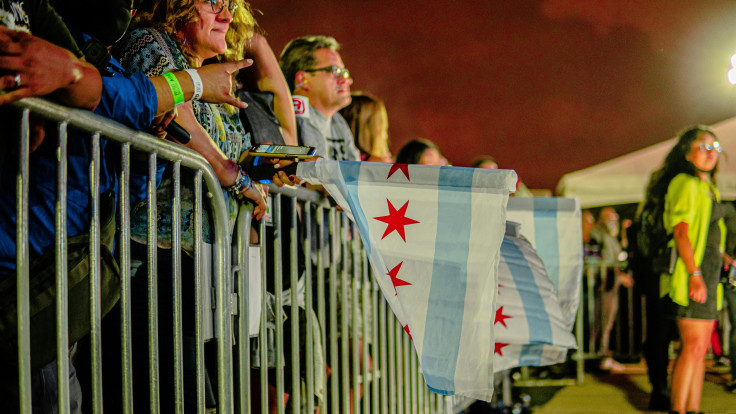Top Safety Measures For Large Events: Keeping Crowds Secure And Controlled
Get to know key safety measures designed to manage crowded environments

Whether you're a construction company building a venue or an agency overseeing its operations, ensuring public safety is a critical responsibility.
From massive music festivals to major sports championships, public events demand careful planning to protect attendees and staff. This article explores key safety measures designed to manage crowded environments effectively.
Traffic Management Barriers
Although simple, traffic management barriers remain one of the most effective solutions for event safety. They serve as a part of the more significant security infrastructure, physically deterring people in certain areas and controlling the crowd's flow.
These barriers work because they are recognised by the public, with their colours and signage indicating no entry. Therefore, whether it's a red and white post or a yellow trellis barrier, it effectively manages large crowds and prevents unauthorised access to hazardous areas.
Modern traffic control solutions go beyond simple safety barriers. Event organisers can now use automated and remote control solutions, including quick-release mechanisms and interlocking systems. These solutions can also be customised with your organisation's branding and logos, creating a professional image throughout the event.
Other Safety Solutions
Traffic management barriers are highly effective in controlling large crowds. However, other safety solutions must also be implemented if someone ignores the orders with malicious intent or causes risks to public safety. Here are a few examples of systems that could be used for this:
Digital monitoring systems
Surveillance technology, such as CCTV cameras, is necessary for significant events. They provide real-time monitoring capabilities and evidence of wrongdoings if needed. Most importantly, they allow security teams to monitor many areas simultaneously, typically from high-up angles that improve visibility.
With the recent evolution of protection systems, the latest solutions can now incorporate artificial intelligence for facial recognition, introducing an extra layer of security that has never been available before.
Access control technologies
Safety barriers can partly control access to different areas within the event but may not be enough for events with varying ticket levels. For instance, significant festivals typically have VIP zones or other sleeping area categories for an additional fee. RFID technology, such as access cards or tagged bracelets, can be used to prevent unauthorised people from entering them.
For even more security, biometric authentication systems can also be set up at the beginning of the event, further minimising the risks of ticket fraud.
Emergency response infrastructure
Every event must have a dedicated emergency response zone that is easily accessible and clearly marked. It should have evacuation routes in case of emergencies such as fire and visible and understandable safety signs.
If an ambulance is required at the event, it should also be able to access the pick-up area without issues. Setting up this infrastructure will ensure that the event organisers respond to incidents as rapidly as possible.
Applications In Different Industries And Events
Safety systems are important in a wide range of environments. A few of such examples include:
Entertainment venues
For major events, venues such as concert halls or arenas welcome huge crowds of tens of thousands of people. They use safety barriers and other systems to create designated areas for the audience, protecting the performers from unwanted attention and preventing overcrowding.
Sporting events
Sporting events can be dangerous for spectators, particularly Formula 1 events. Organisers must ensure that people can be as close as possible for great visibility while also remaining protected. In other cases, using barriers is about the safety of the athletes, especially when it comes to world-famous individuals with large fan bases.
Corporate events
Although corporate events, like trade shows and exhibitions, naturally involve fewer dangers, protection systems are still functional. They may employ safety barriers for queue management and controlled access to different sections. These events benefit more from flexible solutions, which can be adjusted as needed.
Public gatherings
Public events such as parades, festivals, religious gatherings, or markets can be challenging to control. However, they also involve the highest risks, as they tend to be held outdoors in public areas accessible to everyone. Organisers usually coordinate with local authorities and emergency services to ensure the highest levels of security.
Benefits Of Implementing Safety Solutions
The benefits of different safety solutions are wide and clear, as they can be used in various situations and environments. To summarise, here are some of the key reasons to implement traffic management barriers and other road safety equipment by Seton:
- Enhanced security control and minimised risks of accidents;
- Improved traffic flow, reducing congestion and bottlenecks;
- Protection of high-value assets and equipment;
- Faster response in case of emergencies.
Conclusion
Regardless of their scale, organising an event will always include public safety challenges. Utilising the right solutions, whether a classic safety barrier or an advanced digital technology, is non-negotiable.
© Copyright IBTimes 2025. All rights reserved.





















